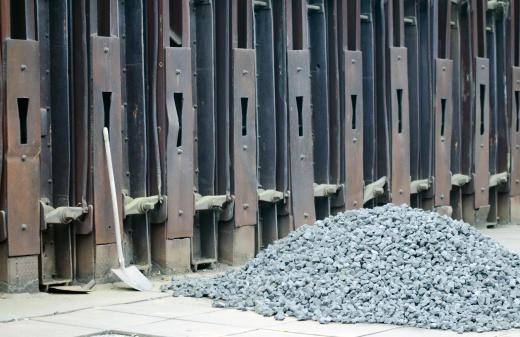Destructive distillation is one common use of pyrolysis, which is a process that involves heating a substance in an oxygen poor environment and usually under pressure. The purpose behind destructive distillation is to reduce a material into a variety of volatile compounds, which can be collected for use or further processing. This process was used historically to determine the chemical compositions of many substances, and was instrumental in gathering a variety of compounds before it was possible to synthesize them through other means. Some common substances that can undergo destructive distillation include wood, coal, and oil.
The way that destructive distillation works is that the pyrolysis is able to break apart large macromolecules. When exposed to extreme heat and a lack of oxygen, these molecules can be made to break up into smaller configurations. This process was very useful in determining the chemical makeup of a variety of substances, and is still used as the primary method to gain access to some compounds. It has also emerged as a potential way to recycle waste plastics by breaking apart the component polymers.

One way that destructive distillation has been used throughout history is in the creation of tar. The process of making tar from wood involves heating up pine or other materials in airtight containers. As the wood heats up, it cannot burn since there is little to no oxygen present. Instead, it can be made to decompose into volatile turpentine and tar, both of which are useful products.
Destructive distillation is also used to derive coal tar using a similar process. A number of useful volatiles can be distilled from bituminous coal, including pyrene and other polycyclic aromatic hydrocarbons. Coal was also historically distilled into coal gas, which was used for purposes such as heating and lighting.
Coking is a destructive distillation process that is used to turn heavy oil and coal into coke at very high temperatures. Coke is a porous substance that has a variety of industrial uses due to the fact that it is so rich in carbon. Common uses for coke include blast furnace fuel, heat shielding, and both industrial and residential heating.
It is also possible to use destructive distillation on oil shale. This sedimentary rock contains large amounts of kerogen, which is an organic compound that can yield useful components when it undergoes pyrolysis. One of the results of this pyrolysis is shale oil, which can be further refined if impurities are removed and hydrogen is added.
